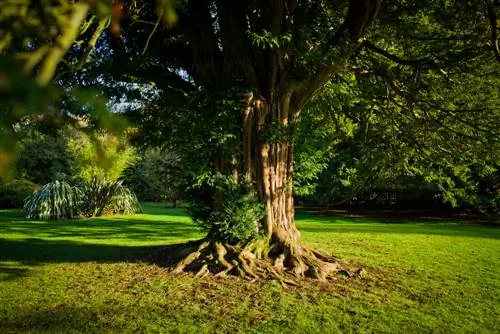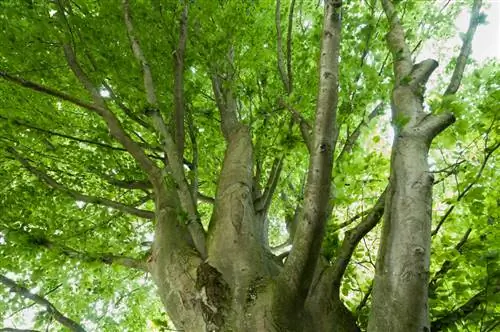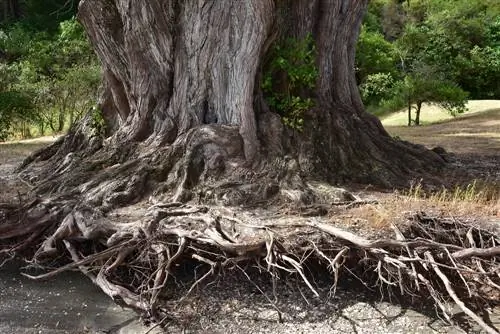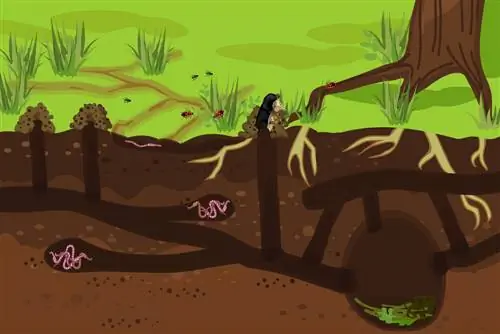- Author admin [email protected].
- Public 2023-12-16 16:46.
- Last modified 2025-01-23 11:21.
The yew is very popular as a native conifer. The tree is robust and resilient and can be cut into any shape you want. You have to be careful when choosing a location, because the roots of the yew tree are difficult to remove later.

What are the roots of a yew tree like?
Yew roots are deep-rooted and contain the toxin taxin. They can be planted close to buildings and sidewalks as the fine secondary roots do not cause damage. Removing older yew roots is difficult; Transplanting should therefore only be carried out on young yew trees.
Yew trees are deep-rooted with dense roots
The yew tree has deep roots. Thanks to its roots that extend deep into the ground, it can provide itself very well even in times of drought or when there is a lack of nutrients. However, it has to be at the location for a while.
Young yew trees do not yet have a well-developed root system and need to be watered and occasionally fertilized when it is dry.
Roots are poisonous
The yew tree is one of the highly poisonous plants. The toxin taxin is also found in the roots. As long as you don't eat any parts of the yew tree, there is no danger.
Yew was even used as a medicine in the past. Because of its toxicity it is no longer used today.
Yew trees do not tolerate transplanting so well
The long roots of older trees are difficult to dig up without damaging the yew. You should therefore only transplant young yew trees whose roots are still small.
Removing yew roots from the garden
Removing the roots of a yew tree from the garden is also a problem. If you don't dig up the tree completely, it will keep sprouting from the remains of the roots.
A film that you stretch over the rhizome in the ground can help here to prevent new growth.
Distance of yew trees from buildings
Since the roots mainly extend into the depths, you can plant yew trees close to buildings or sidewalks. The fine secondary roots are not strong enough, for example, to lift paving slabs or damage the masonry.
The planting distance in the hedge doesn't have to be that great either. The roots have enough space if the small yew trees are planted at a distance of 30 to 50 cm.
Tip
You can safely burn all parts of the yew tree in the fireplace, oven or as garden waste, despite the toxin taxin it contains. The toxins are decomposed and therefore do not pose a he alth risk.






